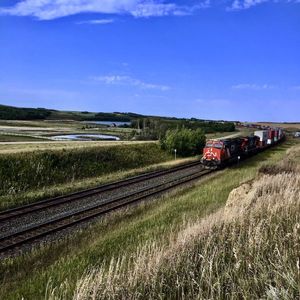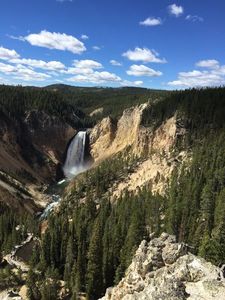Best Advice
By Lorrie Potvin
Good morning folks,
Besides reading as much as you write, the best advice I received from other writers was to observe people. To watch them, to note their body language and actions, and if you can, without being too forward or noticeable, listen to their conversations. So, I lost the ear buds when walking my dogs and tried not to be distracted by the selection of chocolate bars in the lineups at the cash in the grocery store. Instead, I watched and observed the people around me.
Sadly, Covid has provided plenty of opportunities to practice. I’ve watched grumpy, angry people who didn’t want to wait cut lines, and others defiantly pushing carts
overflowing with toilet paper and bottles of sanitizer. Their self-entitled raging eyes just looking for a fight. I averted mine, not wanting to engage. Not to say I didn’t have the urge to tell them off, I did, but I didn’t want to take on their negative energy. It made me sad, anxious even, seeing the tenseness with which they held their bodies.
But it was through watching masked people I came to appreciate how much people’s eyes can tell us. Among the angry, dark, and frightened frowns I found plenty that were kind and happy. I easily imagined them smiling under their masks as they gestured for me to go before them or when they backed up if I came too close. I hope they found kindness in mine in turn.
And how about those masks? Lots of fodder there for self-expression, a way we can communicate to others our way of being. I’m a plain masker myself, but I wonder about those people who twist the elastics on disposable masks circling their ears so that the material cups their chin, mouth and nose tighter, or the ones that double mask. Are they over-achievers, control freaks, or just plain scared of catching the virus? And what about those masks that blare out images like skulls and crossbones, Pride colours, Jesus on a cross, or the large mouth of a bear showing sharp and gnarly teeth, or . . . the choices are endless and so too are what they say to us. Take it away with our imaginations.
Covid struggles and triumphs aside, I’ve looked back on interactions I’ve had with people for inspiration and character building. I once worked with a guy who ate a yogurt cup at lunch every day using his finger, never a spoon. When I asked him why, he said it was just easier. The hungry lazy licking of a grimy finger dipped in creamy vanilla yogurt . . . uhm, now where can I use that?
Then there was my neighbour lawyer (since moved) who clenched his butt cheeks every 30 seconds or so when talking. At first, I thought he was just rising up slightly on the balls of his feet, but a subtle back view of his ass confirmed the clenching. I imagined his nervous energy, dressed in one of those black gown getups covering a stark white shirt, standing in front of a judge -- up, down, up, down, possibly stuttering.
And then there was the red-faced, full-cheeked woman who lifted her large breasts continuously with her forearms. Like with the butt clencher I’m pretty certain it had become a habit she was no longer aware of doing. I’ve used my observations of her in my first work of fiction, Two Rivers, a mystery with a broad cast of characters. She fits right in!
Another great source I have found is paying attention to billboards and businesses. There is a real estate agent in my area named Oral Pretty. A storage facility in a small eastern Ontario town called The Sweet Spot. Not far down the road from it is a garage called New Age Automotive. I can easily visualize a mechanic in greasy-stained coveralls, dirt embedded fingers and thumbs joined, humming ohm over an engine.
Your CanLit News
Subscribe to Open Book’s newsletter to get local book events, literary content, writing tips, and more in your inbox
I also take a lot of pictures, nearly 7,000 pics on my phone. When I wrote First Gear – A Motorcycle Memoir and its follow-up Horses in the Sand, pictures helped me keep my sequencing and remembrances on track. Besides people and places, I took pictures of bulletin boards at community centres and grocery stores, the windows and back walls of restaurants filled with posters and notices, some plastered with hand-written notes and photos. Along with the usual blurbs about yoga classes, softball registrations, cleaning services, and church hall dinners, there were always genuine bits and pieces that I’ve used to flavour my writing. Like the time I met and ‘picced’ two old men, both dressed the same in faded plaid shirts and green work pants that were frayed and stained, sitting at a small round table on the porch of a restaurant. They were smoking and drinking coffee. You know the type -- hard-working, long retired -- that go every day to the same place at the same time to visit and catch up on the news. A sign posted by the local health unit in the window behind them clearly stated in large bold font – NO SMOKING. Guilty pleasure, deference or defiance, fake news, alternative fact, or nothing to see here? Time to go get some flavour or maybe just a good cup of coffee!
Happy Friday, L. xo
The views expressed in the Writer-in-Residence blogs are those held by the authors and do not necessarily reflect the views of Open Book.
Tradeswoman, artist, writer, and teacher Lorrie Potvin, a queerishly two-spirited Métis, is the author of Horses in the Sand: A Memoir. Her first book, First Gear: A Motorcycle Memoir and the essays "My tattoos speak of life and loss" and "Why I’m thankful for multiple sclerosis" (The Globe and Mail), were published under her previous surname Jorgensen, as was the short story, "The 13th Dock" in Writing At Wintergreen, an anthology edited by Helen Humphreys.
Working and teaching in the trades for over 30 years, Potvin holds an Inter-Provincial Red Seal in Auto Body Repair and Refinishing from Algonquin College and a diploma in Technological Education from the Faculty of Education, Queen’s University, with additional qualifications in Manufacturing and Special Education. A citizen of the Métis Nation of Ontario, Lorrie lives on a lake north of Kingston in the area served by the High Land Waters Métis Council where she’s lived for 30 years, building her home and creating art made of stone, wood, hide and steel.





